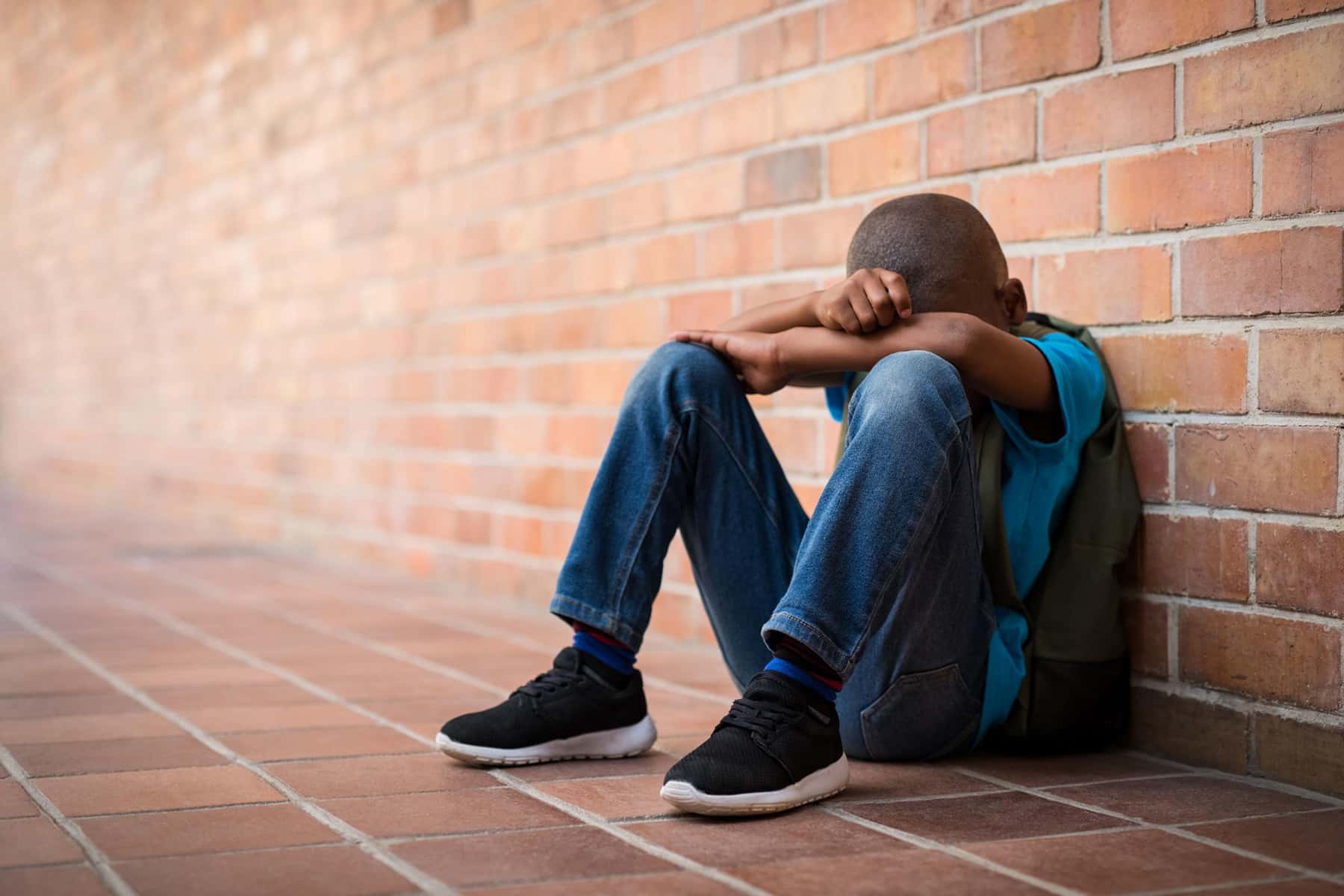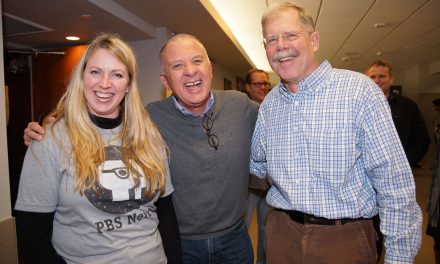
The sports venues of our local schools continue to be a space where racism flourishes.
Earlier this year I wrote about the use of blackface to taunt Nicolet basketball star Jalen Johnson. Just last month Brown Deer High School and Cudahy High School played a football game. A white player on Cudahy’s team called a black player on Brown Deer’s team the N-word.
A Wauwatosa East football player says he was subjected to racist epithets while playing against Oconomowoc on October 18. The Superintendent of Brown Deer, Deb Kerr, spoke to the news media recently about the incident. “We’ve got to make changes and it has to happen now. We’ve got to speak our truth.”
This pattern of racist taunting by white teens is clearly a very serious crisis that needs to be addressed. Overt racism is rearing its ugly head on a much more regular basis. As a metropolitan area we are beginning to see what happens when we no longer have all-white sports teams competing against each other. Far too many white students have taken it upon themselves to make non-white students feel unwelcome.
As our suburban school districts have become increasingly more diverse with black, Latinx, and Asian children moving into our suburbs and exurbs, racial tensions have begun to boil over.
It is not just showing up in sports. There have been racial incidents at schools in Shorewood, Franklin, Greendale, Wauwatosa, and several other public and private institutions in the past two years. Parents of the students that have been the victims of these incidents have not been pleased with how the situations have been handled.
People have consistently asked me over the years why so few black people choose to live in our suburbs. Incidents like these provide ample evidence of why Metro Milwaukee has the lowest percentage of blacks living in its suburbs of any large city in the country.
For decades, whites in this metro area kept blacks out of their neighborhoods with the assistance of the local, state, and federal government. Many communities openly used racial restrictive covenants to ensure that non-whites could not become their neighbors. Redlining maps drawn by the Home Owners Loan Corporation, a branch of the federal government from 1934 until 1940, cemented into place traditions of white only neighborhoods. The maps had areas designated as red to signify areas deemed “hazardous” for giving loans to homes and business properties.
The Mexican community on the south side and the black community on the north side were redlined because they were considered to be “inharmonious racial groups.” In those neighborhoods it was exceptionally difficult to get a mortgage. The Jewish community living in the area where blacks lived was also redlined. On the north side, in what is now the Riverwest neighborhood, Polish families were also considered “inharmonious.”
The redlining maps were drawn in 239 cities including, Kenosha, Madison, Milwaukee, and Racine. Each map designated majority black neighborhoods as “hazardous.” By using these maps, whites were able to gain access to loans that allowed them to begin building generational wealth by obtaining equity in their homes. The Polish and Jewish communities impacted by redlining in Milwaukee were able to overcome redlining. They either moved or the wider community began to accept them as neighbors, unlike the blacks and Mexicans.
The response of whites in 1967 and 1968, when a group of blacks and their white allies marched across the Sixteenth Viaduct to protest housing discrimination, is instructive. A mob of 5,000 angry whites who threw, bricks, bottles, bags of human waste and racial epithets met them on the first day, August 28, 1967. The following day, the mob grew to more than twice the size and was even more vociferous in their demands that the blacks “go back to where they belong.” The marchers were not deterred and continued for 200 consecutive days to force the Milwaukee Common Council to pass an open housing ordinance.
Blacks and Mexicans in Milwaukee knew many years ago that whites did not welcome them as neighbors. Additionally, whites made it clear that they did not want their children to have black or Mexican classmates. Milwaukee’s schools were segregated, which led to a lawsuit filed by attorney Lloyd Barbee in 1965. He challenged the Milwaukee Board of School Directors to remedy the segregated schools in the city.
They responded to the lawsuit by saying that they did not have policies in place that demanded segregated schools like many places in the South. In 1976, Federal Judge John Reynolds disagreed with the district and ordered them to come up with a remedy.
Part of the proof that the schools were segregated by race was a district policy known as intact busing. As the black population of Milwaukee increased from 8,821 in 1940 to over 105,000 by 1970, the district built new schools. However, most of them were on the south side instead of the north side where the largest growth in students was living. Multiple new schools were built on the south side of the city and very few on the north side. The district then bused the black students and their teachers from overcrowded schools on the north side to south side schools.
According to conversations I have had with blacks that lived through intact busing, the black children arrived at school about an hour later than the white students. Most of them had no contact with the white students. As a rule, black and white students had no classes together, no shared recess or lunch under the intact busing policy. Some schools had trailers placed on the playground as classrooms for the black students, while other schools utilized spaces in the basement or other places so that the school could ensure they would have no contact with white students. Some schools required black students to return to their “neighborhood school” to eat lunch and then come back on the bus to finish their day. As a result, black students had shorter school days than their white peers.
In 1975 the state created the Chapter 220 program to provide access to suburban schools for black and Latino students from Milwaukee Public Schools. After losing the lawsuit over segregated schools, the Milwaukee School Board created “magnet schools” to try to entice whites to send their children back into the city. These schools had a specific focus such as music, art, medicine, and such. Neither plan worked. At its peak only about 6,000 students from Milwaukee took part in the Chapter 220 program. It was eliminated by the state in 2015. Very few white students attended the magnet schools and at some schools the programs were shut down completely.
Although whites are about 36 percent of Milwaukee residents currently, just 11 percent of the students in MPS are white. People often ask me where the white children from Milwaukee are attending school. Many are in private, parochial, and charter schools, and some are taking advantage of the open enrollment program to attend suburban schools. Open enrollment provides access to suburban schools, but unlike the Chapter 220 program, no money is provided for transportation to the schools. As a result, many parents in Milwaukee who cannot get their children to the suburban schools do not use the program.
Some parents of color have moved to the suburbs to get around this problem. They have discovered that their children are much more likely to be suspended than their white peers. Differences in discipline for black students negatively impact them academically. The U.S. Department of Education’s Office of Civil Rights provided data on these disciplinary outcomes. The latest available data set is for 2015. The data is self-reported by the districts.
School District
Brown Deer
Cudahy
Elmbrook
Franklin
Fox Point J2
Glendale/ River Hills
Greendale
Greenfield
Maple Dale-Indian Hills
Mequon-Thiensville
Milwaukee
Nicolet HS
Oak Creek-Franklin
Shorewood
South Milwaukee
St. Francis
Wauwatosa
Whitefish Bay
Whitnall
% Black Students
47.2%
6.9%
3.3%
3.2%
11.7%
31.9%
2.8%
4%
13.4%
6.1%
53.3%
21%
4.5%
12.6%
5.6%
7.2%
17.8%
8.5%
2.6%
Out-School Suspensions
68%
16.4%
15.8%
7.7%
14.3%
90%
14.6%
15.2%
60%
34%
76.3%
47.6%
20.5%
50%
23.6%
17.3%
54.9%
33.3%
7%
In-School Suspensions
66.7%
28.8%
18.3%
5.2%
40.9%
64.7%
12.3%
11.2%
53.8%
26.9%
78.6%
40%
17.2%
45.5%
15.4%
16.9%
44.1%
33.8%
12.5%
There are disparities for black and Latino students in most districts. The disparities are the starkest for black students. They are over represented in all of the 19 districts I examined. Black students are more than half of the out-of-school suspensions in six of the districts, and over half of in-school suspensions in four districts, despite being more than half of the students in just the Milwaukee Public School district.
These disparities are some of the things black parents have spoken to me about over the last two years. The Department of Education under President Obama told many of these districts that they must do something to alleviate these disparities. Unfortunately, U.S. Secretary of Education Betsy DeVos in December 2018 rescinded guidance created by the Obama administration to ensure that students of color are not disciplined more harshly than their peers.
As the number of students of color continues to grow moving forward, we can expect to hear about more of these issues. Parents of color have told me that white parents in our suburbs assume that black and Latino students will negatively impact their school districts. There is an underlying racially based expectation by some white parents and white teachers that the schools will need to lower their standards to accommodate these students.
One impact of this false perception is that black students are much less likely to be in Advanced Placement (AP) classes. Pro Publica has assessed data and created a database called “Miseducation” to analyze school data. In Milwaukee Public Schools, the chances of white students and black students being assigned to AP classes is nearly equal. White students are generally more likely to be assigned to AP classes than black students. The numbers for other districts are listed where data is available.
School District
Brown Deer
Cudahy
Franklin
Greenfield
Mequon
Nicolet
Shorewood
Wauwatosa
Whitefish Bay
AP Class Probability – White students compared to black students
3.0x
2.7x
4.8x
3.1x
2.3x
3.2x
1.8x
1.3x
3.9x
Nationwide the odds of getting assigned to AP classes are 66 percent lower for black students and 47 percent lower for Latino students than they are for their white peers. A 2016 study, “Discretion and Disproportionality: Explaining the Underrepresentation of High-Achieving Students of Color in Gifted Programs” found that students in classrooms with Black teachers are more likely to be assigned to gifted programs in reading. “Black students are predicted to be assigned to gifted services 3 times more often in classrooms with Black teachers than with non-Black teachers.”
A 2007 book, “Two Faced Racism: Whites in the Backstage and Frontstage” by Leslie Picca and Joe Feagin studied the racial attitudes of white students and their friends and peers at Midwest colleges and universities. The book is based on a study conducted by Picca where she gave journals to about 1,000 students, 626 of them white. The students wrote about things related to race. They wrote about racist jokes, and incidents related to race. The researchers thought they would see that young white people are less openly racist than those from their parents and grandparents generation.
After reading the journals they discovered that racism was alive and well among the students and their white peers. The difference was where racist remarks and jokes took place. They described what they called the Frontstage, where racism was once socially acceptable among whites and practiced overtly. Racist remarks and jokes had been very common throughout most of America’s history right out on the Frontstage.
That those things are now less socially acceptable now, whites have created a new space to be racist. Picca and Feagin call this the Backstage. These “safe” spaces to be racist are created by whites to hide their racism. White students wrote about white peers who had been kind and courteous to blacks in-person, but made racist remarks and jokes when blacks and other people of color were not present.
This Backstage racism is reversing course and coming back to the Frontstage. The Milwaukee incidents at the basketball and football games show that young white people are becoming emboldened and using racist epithets openly. I have spoken to parents from several suburban school districts who shared with me things their children are forced to endure.
For decades black parents have fought to find the best educational opportunities for their children. For some in Milwaukee, that has meant sending their sons and daughters to suburban schools or moving to the suburbs.
On October 23, racist graffiti with multiple uses of a racial slur towards black people was found in a bathroom at Greendale High School. There has been a pattern of similar incidents going back to September 2018. As many as a half-dozen times racist graffiti has been found at the school.
Last year a black student, Chanese Knox, missed attending the homecoming and two swim meets after being suspended for arguing with a student who called her the N-word. This incident and others led to protests and a discrimination complaint being filed by the American Civil Liberties Union (ACLU). Two online videos of white students from the school using racist epithets were also uncovered.
As these types of incidents continue to pile up, our schools and communities will have a difficult time creating a sense of belonging for students and parents of color. Many students of color and those of different religious backgrounds, as well as immigrant and refugee community members, are finding the environment to be toxic. I doubt that we will see significant change until school leaders recognize the gravity of this crisis and take the concerns of parents more seriously. These parents tell me consistently they are tired of talk that is not followed by real action.
Unfortunately racism is alive and well in Metro Milwaukee. We face the same challenges that have been a part of our lived experiences in America since the nation was founded. How do parents of color and their children find comfort in a nation where many from the majority population consistently show us we are unwanted and unwelcome time and time again? Do we continue to expose our children to these racist environments for the sake of getting a better education for them? What costs are we willing to make them pay for a better education? Is the psychological damage done worth it for them?
If it takes a community to educate a child, we have to answer these questions and find a way to remove the poison from our community so we can provide a healthy education. Otherwise, future generations will continue the cycle that has kept our city and nation segregated by race, religion, and wealth.















